 |
Implicit Bias (Corrections) |
1.00 |
In this course, you’ll learn about implicit biases that happen despite our best intentions. After completing this course, you will be able to:
Define implicit bias.
Describe how implicit bias can impact the workplace or an organization.
Identify the steps you can take to further educate yourself about this topic. |
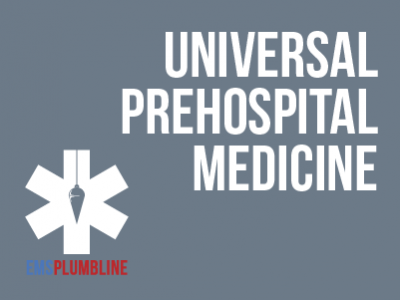 |
Lifting and Moving—Lesson 2 |
0.50 |
In the second session, we will discuss body mechanics and what you can do to properly train to perform in a safe manner. Final Exam: This multiple choice exam is designed to test your knowledge of the material you just reviewed. You have two attempts to gain an 80% or higher on this exam. Please take your time and answer each question carefully.
|
 |
Project-Based Learning for Teachers |
1.75 |
This course is designed to provide educators with the knowledge, skills, and tools to implement project-based learning (PBL) in their classrooms. The advantages of using PBL along with some ways to zero in on selecting topics and projects will be discussed. This course will help you develop new knowledge about using project-based learning effectively. |
 |
Managing Performance: Legal Appraisals |
0.84 |
In this course you will learn to: identify legal appraisals and responsibilities in relation to laws enforced by the EEOC, and identify risks of legal challenges and the importance of maintaining positive communication. |
 |
Making Plans and Developing Policies |
2.00 |
Planning and policy-making are closely linked to the development of quality school-age care programs. When school-age staff are skilled as planners and policy-makers, they can use these skills to design and implement high quality programs that benefit children, youth, and families. It is essential for school-age care professionals to recognize that it is important for policies to grow out of a vision of quality, and a mission that supports that vision. Therefore, creating a vision for quality, developing a program philosophy, and writing a clear mission statement are the first steps in program planning. It is also important for school-age care professionals to use a systematic process to develop goals and objectives, set priorities for accomplishing goals and objectives, and develop goal-based action plans that will help the school-age program achieve its mission. High quality school-age programs are led by professionals who understand how to use effective strategies for creating a continuous cycle of planning and evaluation that supports ongoing program improvement. |
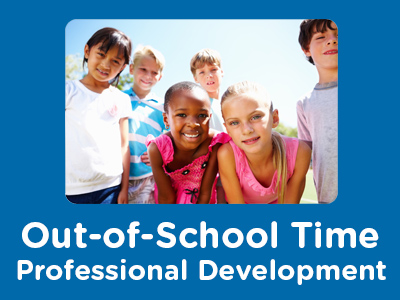 |
Creating and Managing Budgets in School-Age Programs |
2.00 |
When program budgets are developed through a careful, step-by-step process, they become valuable planning tools. By using effective budget planning tools and strategies, school-age care professionals can make realistic projections about the programs financial stability, and design strategies for generating and allocating resources to support the programs vision and mission. It is important for school-age care professionals to understand that the budget process is ongoing. It involves linking financial goals to program goals, identifying program priorities, allocating resources effectively, using reliable methods for calculating potential expenses and revenues, monitoring performance against projections made, and making needed changes and adjustments for the future. |
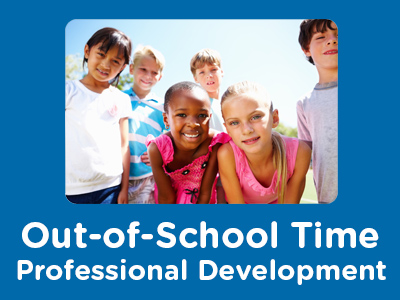 |
The Six Ps of Marketing School-Age Programs |
2.00 |
Effective marketing of school-age programs is a systematic process that involves research, analysis, assessment of market trends and needs, short-term and long-term planning, and development of effective strategies to promote school-age program services and develop a positive image of the program in the community. It is important for school-age care leaders to recognize that marketing is a far reaching process that includes, but is not limited to, advertising and publicity. When leaders take a comprehensive approach to marketing, their programs and projects have an excellent chance of success. Knowledge and understanding of the marketing process is an invaluable tool for leaders as they plan and implement new programs and projects, assess the stability and need for improvement of current programs, develop plans for new or expanded programs, and develop a positive public image of the program and its services. |
 |
Introduction to Fireground Size-up |
2.00 |
This course is an extensive introduction to fireground size-up and is a prerequisite for all other Vigilant size-up courses. This lesson defines the term size up and describes its purpose in fireground operations. The elements of a proper size-up are defined and described. The course introduces a five-step procedure for implementing the size-up process on the fireground. Each step of this procedure is defined and described with an explanation of the elements that are identified during each step. The lesson concludes with an overall summary and final evaluation. |
 |
Attention-Deficit/Hyperactivity Disorder (ADHD) |
0.50 |
This course covers Attention-Deficit/Hyperactivity Disorder, also known as ADHD. A key discussion point of this course is whether ADHD is the wandering of attention, which is a trait, versus the deficit of attention, which is a disorder. We'll cover topics that include what ADHD is, its characteristics, the signs of ADHD, and possible medications or accommodations. It is just one out of many educational courses we offer. This course will help you develop new knowledge about children and help you better understand your role. |
 |
Coaching: Fundamentals of Coaching (Instructor Guide) |
1.00 |
Coaching is the continuous effort to help employees maximize their abilities through personalized counseling and advice. The coaching process not only trains employees to become familiar with business procedures and expectations, but also motivates them to reach both individual and company goals.
Coaching is beneficial to employees because it encourages them to discover their worth and potential. Through proper coaching sessions, employees build confidence, improve their work habits, and increase their productivity.
In this course you will learn to:
1. Define coaching and identify the qualities of an effective coach
2. Build a coaching foundation and plan a coaching strategy.
This Instructor's Edition of this course includes notes and suggestions to assist you in presenting the material, whether in an in-person classroom setting or as an instructor-led online or distance-learning course. It also provides you with the answers to questions found in mid-lesson activities, as well as in the quiz that concludes the course. |
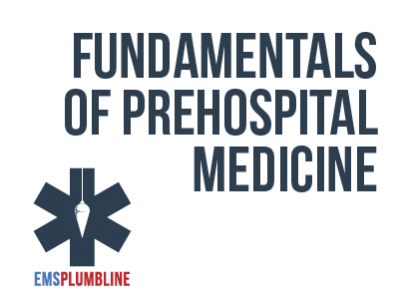 |
Building Upward: Resuscitation of Anaphylactic Shock Part 1—Overview |
1.00 |
Retired ALS provider, Michelle Cerone, speaks with Dr. Jeremy Cushman about the recognition and treatment of anaphylactic shock. This discussion gives the BLS provider the opportunity to compare allergic reactions to the life-threatening condition that requires rapid intervention. Final Exam: Please read each question carefully. You will have two attempts to gain a 70% or higher on this exam. If you are not successful in two attempts, you are welcome to take the course again to gain the certification. |
 |
E-Mail Etiquette: E-Mail Messages |
0.50 |
In this course, you will learn how to take advantage of the headers in e-mail messages. You will learn about the “To” field, in which you should type the recipient’s e-mail address. You will also learn when to send carbon copies and blind carbon copies of messages. You will learn the importance of writing a proper subject field for e-mail messages and that the header also includes the date and time of sending messages. Finally, you will learn how to construct the body of an e-mail message, add a personal touch to your messages by including a proper greeting, relay information by placing it in the appropriate order, and use different types of lists effectively. You learned the correct way to write long e-mail messages to keep recipients interested in the information and how to effectively close e-mail messages. |
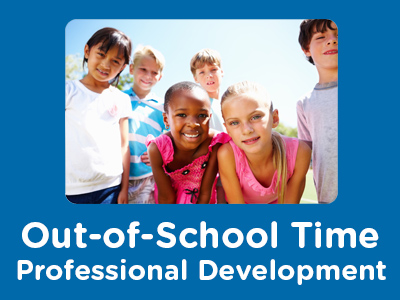 |
Creating Community Collaborations |
2.00 |
Across the country, more and more communities are forming community collaborations to address the out-of-school needs of children and youth of all ages. When different segments of the community join together, share ideas, and pool their resources and efforts to create out-of-school time initiatives, children and youth benefit. What one organization or program may not be able to accomplish alone is often achievable when partnerships and collaborations among diverse groups and individuals are formed.
When school-age care professionals are knowledgeable about what it takes to create and sustain successful collaborations, they can play an important leadership role in creating out-of-school time initiatives and programs that will meet the needs of children and youth in their communities now and in the future. |
 |
Observing Children in School-Age Programs |
2.00 |
Conducting and documenting objective, accurate observations of children in school-age programs is an important professional responsibility of school-age care professionals. Two useful tools for structuring observations are developmental checklists and anecdotal records. Both tools provide rich information that help staff learn about children’s development. When school-age care staff conduct regular observations of children’s development, and prepare objective documentation of these observations, they are able to discover the uniqueness of each child, and provide developmentally appropriate guidance and support for all children in the program. |
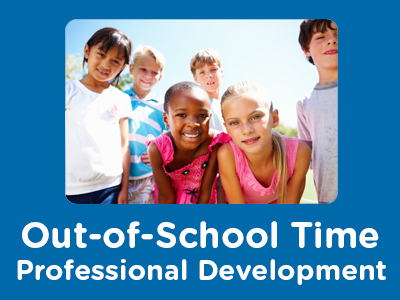 |
Sharing Information with Parents and Other Professionals: Communication Tools |
1.00 |
School-age children work on many important developmental tasks during their out-of-school hours. One of the important responsibilities of school-age care staff is to help parents stay in touch with how their children are growing and developing during program hours. In this course, we will explore tools used to communicate with families about their children. |
 |
Response to Intervention (RTI) |
1.00 |
This course covers everything paraprofessionals and teachers need to know about Response to Intervention (RTI). This course will help you develop new knowledge about the different levels of interventions for all students and help you understand your role within the different levels of interventions. |
 |
Understanding Autism in Your Community |
1.00 |
This course is designed to educate communities on how they can work together to be more inclusive and accepting of people with autism. It will give you an overview of the struggles people with autism face and some ways in which communities can make themselves more accessible and autism-friendly. |
 |
Call Center Management: Communicating Information to Executives |
0.75 |
This course will cover how to identify the information that executives need and communicate with executives. |
 |
Project Teams: Projects and Project Teams (Instructor Guide) |
1.00 |
A project is a task or a group of tasks with a distinct beginning and end that is undertaken to create a unique product or service. A project must have defined objectives to clearly indicate when the project is complete. In addition, a project must have a clear end user who will use or benefit from the product or service produced by the project team.
When an organization develops temporary needs that are outside the scope of individual employees’ responsibilities, it often forms project teams to address these issues. As a manager, it is your responsibility to recognize the need for a project team, determine the type of team required for the project, and assign employees to the team.
In this course you will learn to: identify the phases and requirements of a successful project, and build and organize a project team and avoid pitfalls in project teams.
This Instructor's Edition of this course includes notes and suggestions to assist you in presenting the material, whether in an in-person classroom setting, or as an instructor-led online or distance-learning course. It also provides you with the answers to questions found in mid-lesson activities, as well as in the quiz that concludes the course. |
 |
Whole Child Approach |
1.25 |
This course covers the Whole Child Approach. It is just one out of many education courses we offer. This course will help you develop new knowledge about the Whole Child Approach and why it is significant in education. It will teach the importance of character development, social and emotional learning (SEL), personalized learning approaches, interventions, and assessments. This course will also explain culturally responsive teaching and how parent and community engagement is crucial to students' success. |
 |
Advanced Interpersonal Communication: Customers and Vendors |
0.50 |
Your customers include anyone who uses your company or organization to obtain goods and services. Customers might be internal or external. An internal customer is a member of your organization and can be a supervisor, colleague, or subordinate. An external customer is someone from outside your organization. Each customer is of equal importance, regardless of the amount of business that customer provides to your organization. You should provide the same level of quality goods and services all your customers, and all are equally deserving of efficient and effective communication.
In this course you will learn: to respond to customers’ complaints, and to reject a vendor’s contract without rejecting the vendor, and address a complaint to a vendor. |
 |
Business Ethics: Managerial Ethics |
1.34 |
In this course you will learn to: identify the characteristics of ethical managers, different ethical styles, and the important ethical components of various human resource issues, and ensure ethical behavior in the workplace and address the ethical dilemmas of subordinates. |
 |
Business Ethics: Organizational Ethics |
1.50 |
In this course you will learn to: identify the need for organizational ethics and the types of ethical issues that arise in various functional areas, promote and maintain ethical principles in business, develop a corporate code of ethics and execute an internal audit, identify types of corporate social responsibilities and handle conflicts in responsibilities when they arise. |
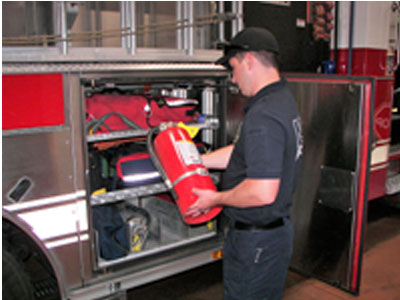 |
Fire Extinguishers (NYS03) |
1.00 |
This lesson reviews the identification, selection, and use of different types of fire extinguishers. The lesson begins with a review of the basic science of fire. The classifications are defined and described and the extinguishers that meet those classifications are identified. Fire extinguisher maintenance is described and reviewed. Finally, the PASS method of fire extinguisher operation is defined and described. |
 |
The Purpose for Ethical Commitment (CDA 6) |
2.00 |
This course explores the NAEYC Code of Ethical Conduct, equipping you to uphold your responsibilities and moral obligations towards children, families, colleagues, and the wider community. Discover how this essential framework guides your interactions and decisions, fostering a foundation of trust, respect, and professionalism in your work. |


























